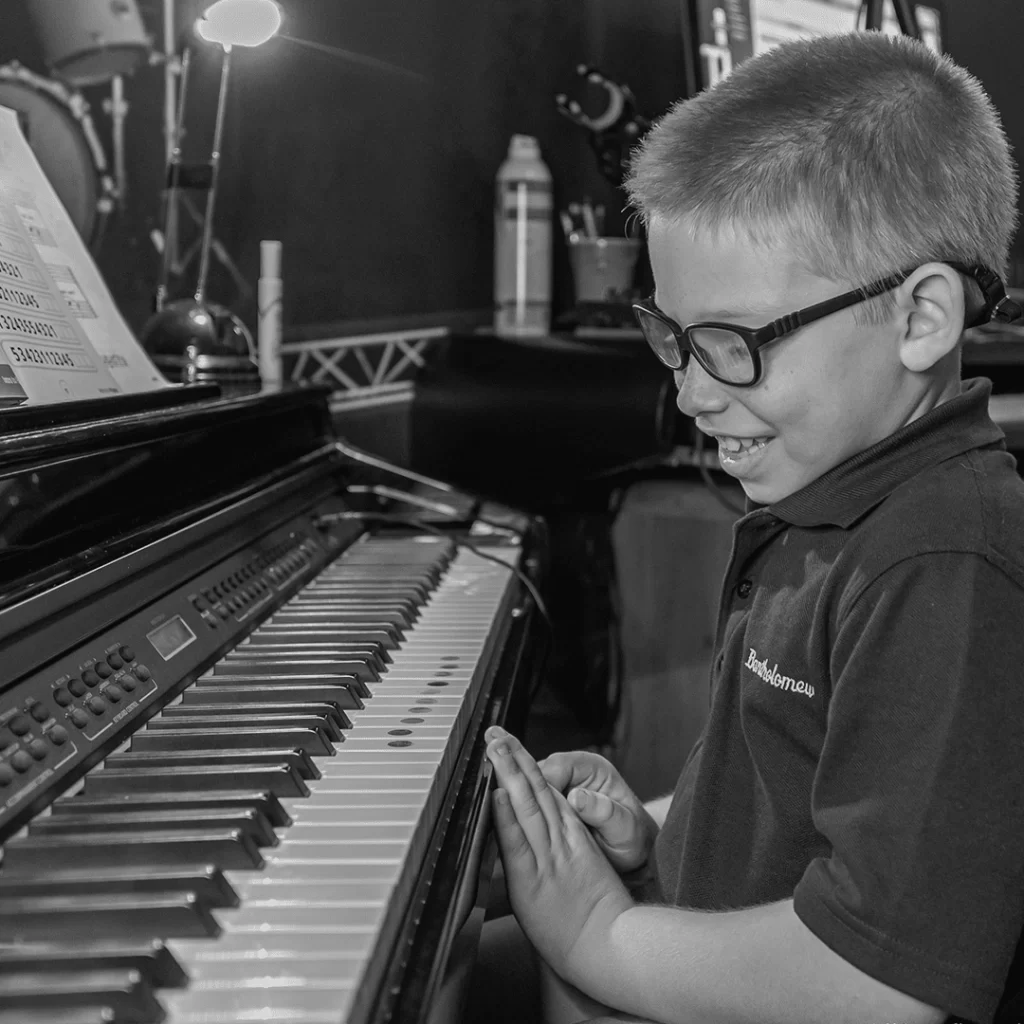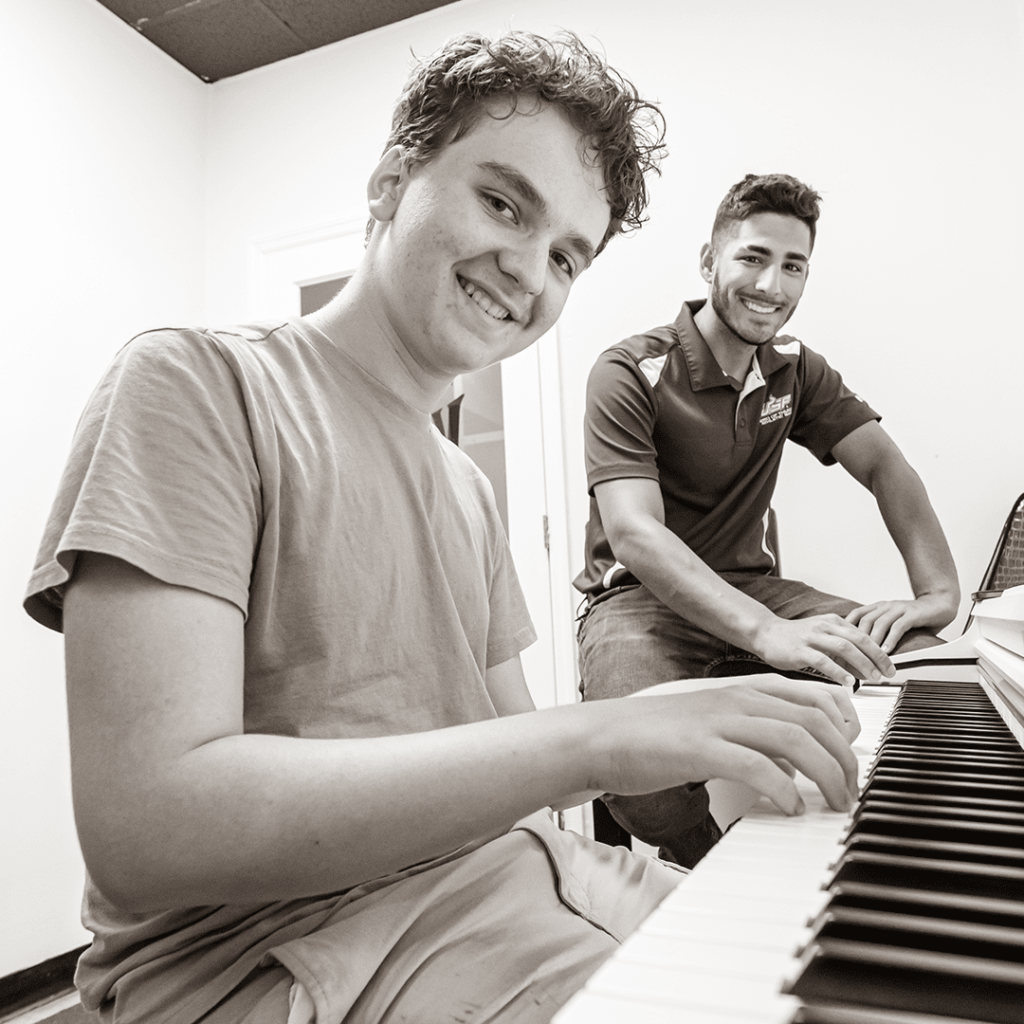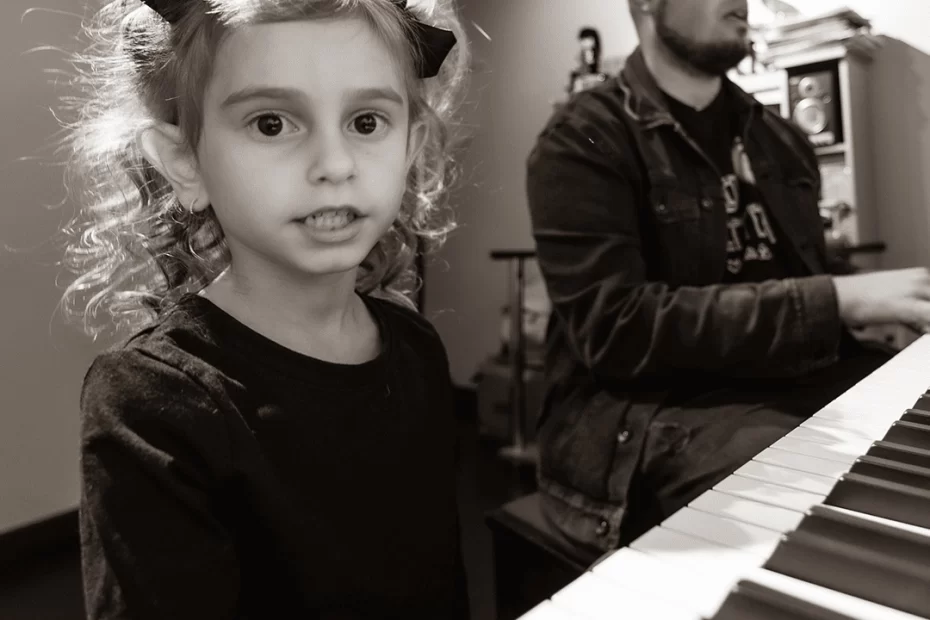Similar to guitarists and bassists, piano players have to synchronize left and right-hand movements when playing music. Unlike guitarists and bassists, pianists often have to play two themes at different rhythms – it’s like playing two songs simultaneously.
If you’ve been struggling to understand how professional piano players have the ability to seamlessly play piano with both hands without even thinking about it, we’ve got your back.
We’re The Music Box, Florida, Tampa’s premier piano music school. Our coaches can help you build piano accuracy, finger dexterity, focus, and everything else you need to play entire music pieces and songs on a piano with both hands.
In this article, our piano coaches will highlight some of the main elements that comprise our piano lessons, so without any further ado, let’s dive straight into it.
How do Experts Play Piano with Both Hands?
For beginners, separating left and right-hand movements is the trickiest part while professionals do it almost as if they were on autopilot.
The key to playing piano proficiently with both hands is, you guessed it – practice. Professionals have spent 8-10 (or more) hours a day with their chosen instrument for years if not decades.
You’ll probably be thrilled to hear that you won’t need such a ridiculous amount of time to learn this much-needed piano skill, but you’ll have to focus on other elements to make up for it.
The Music Box piano coaches will underscore some of the main things that you’ll learn at The Music Box, all of which we also encourage you to practice at home for the best results.

Listen to the Piece/Song on Repeat
One of the biggest traps beginner pianists can fall into is not even realizing that they’re making mistakes. This often happens when they think they know the song or piece they’re learning to play, and yet they’re just barely familiar with it.
Before you can expertly play a piece, you’ll first need to learn how it sounds in its entirety. This will help you understand where each part begins and ends, which will make learning the pieces quicker.
Practicing a piece that you’ve only listened to a few times is similar to trying to shoot basketball hoops with a blindfold. You know where the hoop is, but you can only guess where you should aim, how much force should be applied, and so on.
If you’re struggling to learn a piece that’s a part of one of our lessons, ask the coach what it’s called and find it on your preferred streaming platform. Listen to it while commuting, in your spare time, and whenever you can, and you’ll learn it in no time. To start, you can check out our TikTok page if you wish to see how far our students have come after merely a few weeks at The Music Box.
Learn the Arrangements for the Left Hand Part-by-Part, and then the Right
The piano is one of the few instruments for which this approach can work. You won’t see many guitarists practicing their fretting and strumming parts separately.
The left-hand arrangements are typically the “rhythm” parts. Once you nail these parts down, you’ll have a solid foundation for the “lead” parts (on your right hand). It is also possible to do it in reverse, but since right-hand arrangements tend to feature rests, this is usually the more difficult approach.
Choose a music piece you wish to learn, and start practicing the first section of the rhythm arrangement. Once you feel confident that you can effortlessly play this part, proceed to the next, until you’ve covered the “bare bones” of the entire piece. Now, do the same with the right-hand arrangements. Check out our Facebook page if you want to see how some of our piano students are doing it.
Put the Pieces Together
Every musical piece is a puzzle for pianists to break down. With all the pieces etched deep into your muscle memory, bringing these individual segments together becomes a breeze.
Most importantly, if you’ve truly learned the piece by listening to it sufficient times, practiced all the arrangements separately, and if you know where they should be placed, all that’s left to do is to put all the pieces together.
You’d be surprised how little effort you’ll need to put into achieving this. After all, you’ve already practiced the same piece in several ways; even if you can’t seem to remember, your fingers will, and that’s what we call “muscle memory”.
That’s the key to playing piano with both hands – not actively thinking about what you need to do and letting the hours of diligent practice do their work. Swing by our Instagram page to learn more about the ways you can up your piano-playing game.

Extracurricular Activities That Can Help
Any activity that pertains to managing two items or thoughts without focusing on either can boost your ability to play piano with both hands. Juggling, for instance, is great, as well as playing darts or even snooker.
Playing other instruments can also help a lot, especially since you’ll develop a stronger sense of hearing and work on your rhythm. Desktop and video games, especially music-oriented games like Magic Tiles or Dancing Road can help you work on your piano-playing skills to a degree.
Your Piano-Playing Journey Starts at The Music Box, Ready to Join?
Mastering how to play piano with both hands is much easier said than done. You still have a long road ahead, filled with hours of practice, and hopefully, tons of fun.
If you’d like to start your music education journey and seek help from the most reputable piano coaches in Tampa, Florida, we warmly invite you to join The Music Box. Our HQ is located at 4321 Gunn Highway in Carrollwood, Florida, so swing by whenever you feel ready to begin.
You can also send us an email, give us a call, or enroll online by following this link.



